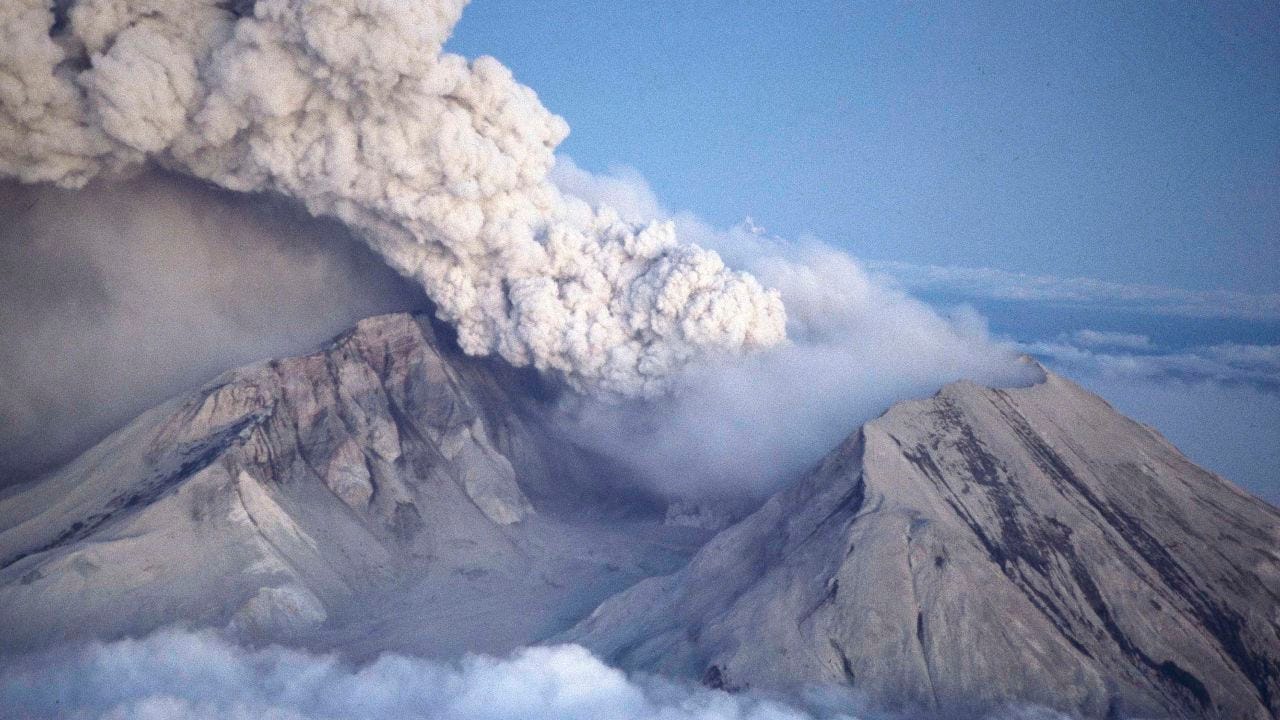When a volcano erupts above ground, the effects can be seen immediately as smoke, ash and lava can shoot into the air and down the slopes of the volcano. In the state of Washington, the eruption of Mount St. Helens in 1980 was one of the most destructive volcanic events in the history of the United States. The photo below (reference here) is Mount St. Helens on May 18, 1980.
Over in Europe, Mount Vesuvius (in Italy) has erupted many times, including a catastrophic eruption in AD 79 that buried the town of Pompeii. Vesuvius has erupted many times since, including an eruption as recent as 1944.
Volcanoes also exist in the earth’s oceans. The islands of Hawai’i were formed from from volcanic activity. Farther east in the southern Pacific Ocean, the Kingdom of Tonga consists of 171 islands (45 inhabited). Not all of the Tongan islands are volcanic, but two uninhabited islands (Hunga Tonga and Hunga Ha’apai) form the top of an underwater volcano called “Hunga Tonga-Hunga Ha’apai”.
After a period of inactivity (2014 to 2021), the volcano erupted in December 2021 and the following days and weeks saw an increase in volcanic activity. The big eruption started on January 14, 2022. Clouds of ash and smoke were sent as high as 50 kilometres into the air. The eruption was so loud, people as far away as Canada reported to hear the boom (reference). The animation below shows the eruption from satellite (reference here).
When this type of event occurs, a lot of devastation can follow. Tsunamis, with waves as high as 15 metres, reached nearby islands. Tsunami warnings were in place as far away as North and South America. The ash and smoke clouds were so extensive, weather systems were created, and 200,000 flashes of lightning were detected in a one-hour period the following morning. Satellite imagery shows that many Tongan islands became covered in ash in the days that followed the eruption (references here and here).
When volcanoes erupt, large volumes of sulphur dioxide are released. This can result in the formation of an aerosol layer that reflects sunlight, which, in turn, can cool the climate. However, in this instance, a huge volume of water vapour was also released into the atmosphere. Water vapour acts like a greenhouse gas, which can result in a warming of the climate. Scientists are studying the effect of this excess of water vapour in the atmosphere and stratosphere.
These volcanic island can change significantly during and after events like this. The twin islands of Hunga Tonga and Hunga Ha’apai appeared as two tiny separate islands less than two kilometres apart as recently as 2014. Following an eruption in 2014-15, the two islands became connected until the eruption of 2022, which separated them again. The photos below show this evolution (reference here).
Our world is changing all the time. Some of the changes are natural; other changes are clearly caused by our activities. In this example of a natural phenomena, the results can be disastrous. There are more than enough of these natural disasters that we cannot control; we shouldn’t be creating extra problems! For example, we can pay attention to how we’re contributing to climate change. And we can pay attention to how much water we’re using!
Thanks for reading The Water Droplet and keep watching for more stories about water!






